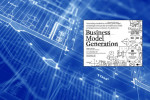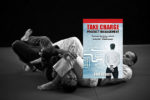Creating meaning with design driven innovation

Design Driven Innovation: Changing the Rules of Competition by Radically Innovating What Things Mean by Roberto Verganti
The discipline of design is aimed at the creation of meaning, according to Roberto Verganti in his book Design Driven Innovation. Design’s role is the creation of a conversation between a firm, its customers, and a critical network of “interpreters” who are engaged in discovery and shaping of new ideas. Verganti stays away from the traditional user-centered design paradigm in favor of a model which places the responsibility for product vision squarely on the firm and establishes a pivotal role for third-party interpreters in the design discourse.
From the perspective of the firm, key steps in the design discourse are listening, interpreting, and addressing. Listening is a common ingredient in any design process, but Verganti introduces the interpreting step in order to focus on generating the firm’s own vision and ideas for new meanings to be offered in the market. Addressing is likewise important in his framework because it is at this stage that the firm clarifies and refocuses the discourse with interpreters based on the firm’s vision. He stresses the participatory nature of design driven innovation as distinct from a more passive approach where requirements and needs are assumed to be latent within the customer base.
Market! What Market? We do not look at market needs. We make proposals to people.
—Ernesto Gismondi, chairman of Artemide
Verganti does not subscribe to the user-centered design philosophy because he believes that radical innovation of meanings can best be brought about by a design discourse based on a strong vision by the firm offering the product. Users can typically only tell you about what is lacking in their current context–it is difficult for a focus group to provide a compelling vision. While user-centered design is observational, design driven innovation is participatory and involves deep research and time needed to develop a radically new meaning. The ability to develop and sustain the critical relationships with external “interpreters” is another key characteristic of design driven innovation.
A lot of times people don’t know what they want until you show it to them.
–Steve Jobs
There are two common innovation strategies: quantum leaps in product performance created by breakthrough technologies and incremental improvements enabled by key insights into the needs of users. The third way is to radically innovate meaning by using design driven innovation. Examples are lamp whose meaning is not just being a beautiful object but a light that makes you feel better or athletic shoes that have more meaning than being simply inexpensive versions of leather shoes. The meaning of coffee shops was radically changed by Starbucks as the company evolved the experience of coffee and created a “third place”.
The dimension of meaning that products encompass is as important as the utilitarian and functional attributes. Although design driven innovation cannot guarantee that a given meaning will be taken up by an audience, it does provide a foundation for creating the meaning that will equate to a “proposal.” The meaning that is contained within a product is more powerful than the utilitarian innovation which is enabled through feature and function improvement.







